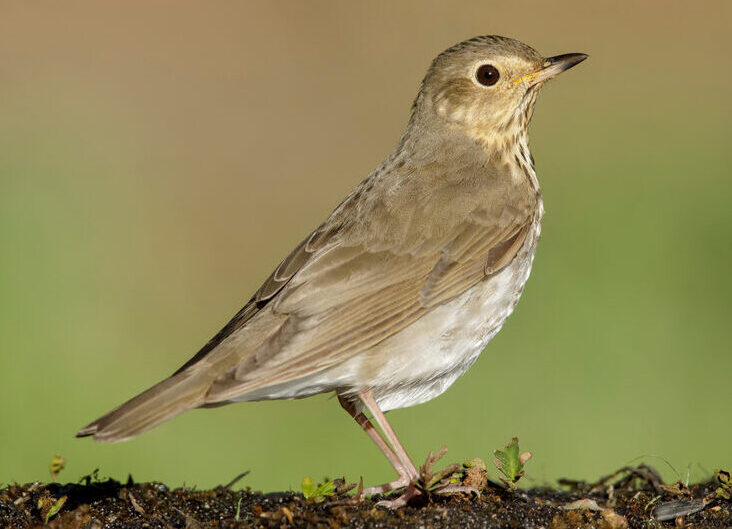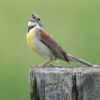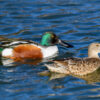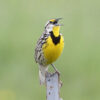Swainson’s Thrush, Catharus ustulatus
Bill Rowe
Every spring, along with the warblers and other migrants, come the spotted thrushes—a term that covers five species, one of which, the Wood Thrush, is a locally-nesting bird, while another, the Hermit Thrush, comes through early because it winters in the southern U.S. The other three, after wintering in the neotropics, come through primarily in May on their way to the north woods, and the commonest of these is Swainson’s Thrush. If you see this bird in your yard, you can recognize it as one of this group by its brown color and spotted breast; it may even hop around on your lawn like a small robin (which is its relative in the thrush family). Since it is a bit tricky to separate from the other species by sight, it’s helpful to learn the Swainson’s song and call notes—in fact, all the thrushes have lovely, fluty songs that follow distinctive species-specific patterns. Learning these will help you on spring migration in Missouri and also if you are taking a summer vacation in, let’s say, the Colorado Rockies, where you may encounter both this species and the Hermit Thrush and can tell them instantly by their songs. Like the Hermit, Swainson’s has several subspecies over its wide breeding range: in the east and much of the mountain west, the one we see is the “Olive-backed,” while the form that lives along the west coast is known as the “Russet-backed” Thrush. These forms show some significant differences, perhaps enough to make them candidates for “splitting” as separate species some day (but let’s not get ahead of ourselves).
IDENTIFICATION: First, eliminate three thrushes that show reddish color: Wood Thrush on the head (among other differences), Hermit Thrush on the tail (contrasting with the brown back), and Veery all over the upperparts. So, if your bird is plain dull brownish from head to tail, you are left with Swainson’s and Gray-cheeked Thrushes. They are very similar, but you can recognize Swainson’s by its full, staring eyering, with a pale connecting streak between eye and bill, giving the appearance of a spectacle, plus the buffy tinge to its face and upper breast. Its song, often heard in spring, consists of airy, flute-like phrases that spiral upward. Its most frequent call note, heard any time, is a short pwip, like a water drip.
ST. LOUIS STATUS: Common migrant in spring (late April, May) and fall (late August to early October).
Learn more and listen to the songs and calls of Swainson’s Thrushes here.

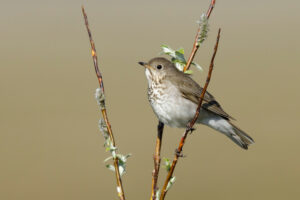
Note bold eyering/spectacle,
buff tinge on face
Photo Credit: Al Smith
Gray-cheeked Thrush: Note slight rear eye crescent, no spectacle, gray face

